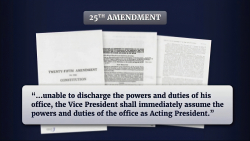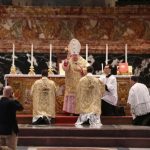Tel Aviv’s first mayor, Meir Dizengoff, was ruminating about a Jewish art museum in Eretz Yisrael when he invited Marc Chagall to visit him in the spring of 1931. While they were discussing potential museum programs, Chagall dismissed Dizengoff’s didactic approach for galleries devoted to modern art, historic reproductions, and Jewish ethnographic artifacts. “A new Hebrew city should exhibit new Hebrew art,” Chagall insisted, suggesting the museum focus only on nineteenth- and twentieth-century Jewish art.
The Tel Aviv Museum (now TAMA, the Tel Aviv Museum of Art) opened on April 2, 1932, under Dizengoff’s supervision, with Chagall’s Jew with Torah (1925)—a gift from the artist—registered as “No. 1,” marking the first entry in the museum’s collection. A year later, Karl Schwarz arrived from Berlin to take up the first directorship and expanded the vision of a modern collection to encompass a wider breadth of the European avant-garde. Nearly a century later, this collection spans more than two thousand artworks.
Tracing the Modern: Selections from the Tel Aviv Museum of Art, 1880–1989, published by Rizzoli and TAMA with the generous support of the Paulson Family Foundation, displays over 130 works selected by the book’s editor and TAMA’s curator, Hillary Reder, as a versatile guide to the museum’s collection. The catalogue authors include Israeli curators and scholars familiar with select pieces, writing as if about old friends, and a host of international experts whose contributions conveys a sense of partnership with other institutions.
What makes TAMA’s modern collection unique, notes the museum’s director, Tania Coen-Uzzielli, is that the word “acquisition” seldom appears in the credit lines. “Rather, the collection consists almost exclusively of donations,” and in many cases, whole-collection donations, as a testament to benefactors’ unwavering belief in the museum.
Schwarz arrived in Tel Aviv in the spring of 1933 with 1,300 works on paper by contemporary German artists, from an extensive list of European collectors. As modern art in Europe came under threat from the rising Nazi regime, Schwarz’s vast network of collectors turned to Tel Aviv as a potential haven for their “degenerate” collections marked for confiscation or destruction. Maurice Lewin’s collection from Antwerp arrived at the new Tel Aviv Museum in 1934 and included Paul Signac’s pointillist masterpiece Pont Mirabeau (1903) and James Ensor’s Masks (1925). The German textile manufacturer Erich Goeritz also sent five hundred works from his exceptional French and German collection, which includes the world’s most important group of early work by Alexander Archipenko.
A new wave of donations in the 1950s saw the collection enhanced with Cubism and Surrealist works, alongside forty German Expressionist works from Rosa Schapire’s private collection. Between 1954 and 1955, Peggy Guggenheim also donated thirty-six artworks, making it her largest gift to any museum other than the Solomon R. Guggenheim in New York (to which she donated her entire collection upon her death) and the only gift she made outside the United States. Her donation of abstract paintings included three Jackson Pollock canvases that mark a pivotal juncture in the artist’s career. Dancers (1946) and Earth Worms (1946) embody the dwindling vestiges of Pollock’s representational Surrealism, while Prism (1947) stands as one of his earliest experiments in what would later become his signature “action” or drip style.
Today, the modern art galleries in TAMA’s brutalist-style building are shaped by long-term-loan collections from Moshe and Sarah Mayer (on loan since 1982) and Simon and Marie Jaglom (on loan since 1994). Masterpieces from Camille Pissarro, Claude Monet, Vincent van Gogh, and Paul Cézanne retell the narrative of Impressionism and Post-Impressionism, while the School of Paris and the twentieth-century avant-garde can be glimpsed in Amedeo Modigliani’s Gaston Modot with Hat (1918) and Henri Matisse’s Woman with Gladiola (1922).
The collection’s other bulwark is the Mizne-Blumental Collection, which arrived in 1993 and was made a permanent gift in 2018. Known as an eclectic compilation of early twentieth-century works featuring, among others, pieces by Wassily Kandinsky, Gustav Klimt, Pablo Picasso, and Kees van Dongen, the collection also narrates the development of Cubism. Georges Braque “unwittingly announced the emergence of Cubism” in The Viaduct at L’Estaque (1908), which is among a body of work widely “considered the earliest manifestations of the new style,” notes Reder. Fernand Léger’s playful Contrast of Forms (1913) conveys the idiom’s transition out of its analytic beginnings pioneered by Braque, while Amédée Ozenfant’s Sisteron (1918–20), together with Joaquín Torres-García’s Composition in Red and Black (1943), embodies the style’s architectonic and constructivist undertones.
The end of modernism is signaled by the collection’s largest piece (and the book’s frontispiece), a work by Roy Lichtenstein. In 1987, TAMA’s then-director, Marc Scheps, invited Lichtenstein to create a mural for the museum. Two years later, the artist arrived in Tel Aviv with a team of assistants to complete the diptych Tel Aviv Museum, Mural (1989, each panel roughly twenty-three by twenty-eight feet) that today straddles an exposed concrete column in the museum’s lobby.
The beginnings of TAMA and the origins of its modern collection are also intricately wrapped up in the establishment of the Jewish state. When Dizengoff died in 1936, he bequeathed the museum to the city and its residents. “I hand over to your care . . . my youngest offspring, the child of my delight, the Tel Aviv Museum . . . . Take care to ensure its sustained existence and future.” Just over a decade later, the country’s first prime minister, David Ben-Gurion, signed the declaration of the State of Israel in 1948 in the museum’s first building on Rothschild Boulevard, surrounded by the modern art that had found refuge from totalitarian Europe.
Tracing the Modern fulfills Dizengoff’s request to sustain the museum’s existence, even as rocket attacks forced most of the collection underground for safety and the international community turned increasingly hostile toward Israel’s cultural heritage in the months leading up to the book’s publication. The book represents a hope that, in the words of John Paulson (who writes one of the book’s introductory notes), “you will visit one day to see the collection in person.” For those who already revere the collection, “this book will remind you of the wonderful art you have previously seen.” In this manner, Tracing the Modern also symbolizes the museum’s resilient future.


















